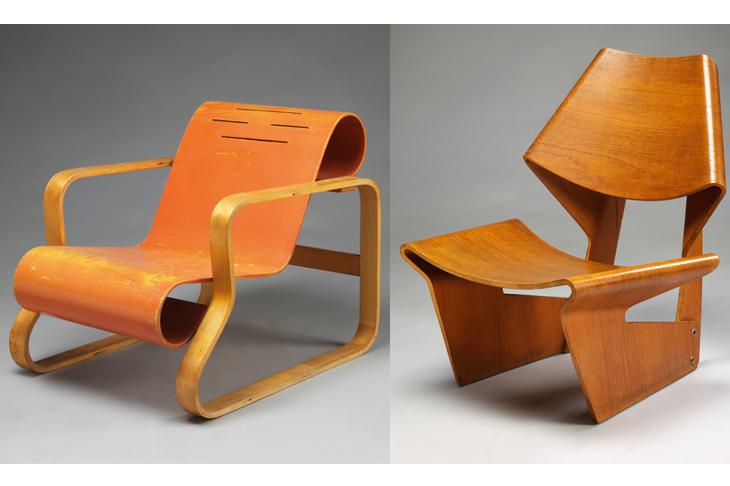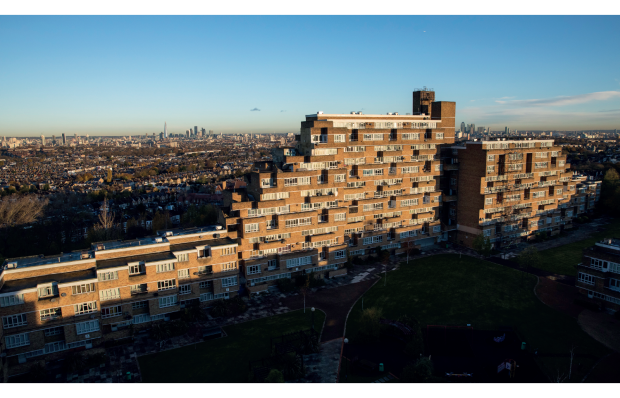We routinely feel emotional about materials — often subliminally. Which is why new substances and techniques for manufacturing have provoked vivid writing, particularly during the design-reform debates of the 19th century. Think of John Ruskin on the evils of cut as opposed to blown glass or his views on wrought iron as opposed to cast iron — the latter emblematic in his view of a ‘sophisticated, unkind, uncomfortable, unprincipled society’. For the designer Gottfried Semper man’s very inventiveness was a loss. We were losing our understanding of discrete materials. Then there was, and is, our perfectly justified anxieties about the plastics family, beautifully chronicled in Jeffrey Meikle’s American Plastic: A Cultural History. Plasticity was already a worry in the 19th century in the context of papier-mâché, rubber and gutta-percha: pourable or mouldable, they could be used to imitate respected traditional materials such as wood or stone or bronze and were distrusted on that account. Anxieties about materials that appear to deceive are at the heart of Christopher Wilk’s deeply researched show Plywood at the V&A — which promises to be a wonderful technological primer, a gathering of bizarre, unexpected and beautiful objects and a social history, all rolled into one.
There are precedents for single-material shows — most recently the exhibition Bronze at the Royal Academy in 2012. A celebration whose intellectual arguments could have been fitted on to a postage stamp, Bronze offered room after room of beguiling objects and was understandably popular. Plywood at the V&A is smaller and far more intense — it makes full use of the height of the Porter Gallery. A great roll of veneer tumbles down one wall, the battered fuselage of a de Havilland Mosquito floats on high near two shapely petrol tanks from the same plane. Also aloft are two Mirror dinghies, one fully assembled and one shown as a kit of parts, suspended like a Cornelia Parker explosion. At ground level we find all the design classics — chairs by Charles and Ray Eames, Robin Day, Arne Jacobsen, Sori Yanagi and Kenzo Tange — plywood at its most curvaceous, acceptable and collectible.
Plywood is a simple engineered material with a long history that is traceable back to ancient Egypt, the making process depicted on a carving in Thebes. Created by gluing wood veneers together, with the grain of each veneer running perpendicular to the next — known as cross-graining — plywood is stable, non-warping and stronger than solid wood. In the 18th century it was used in high-end furniture to create trellis-cut chair backs in the Chinese or Gothick style. These expensive veneers were cut by hand by elite sawyers. But mechanised cutting machines led to a dramatic drop in the price of veneers coupled with a marked change in status for plywood — and indeed for any veneering on solid wood. If in the 18th century veneers might beautify an already well-built piece of furniture, by the mid-19th century cheap machine-cut veneers were used to disguise an inferior wood carcase. Veneer wars led Christopher Wilk to research trade magazines in Europe and North America, investigate patent law and the publications of the USA Forest Products Research Laboratory and to unravel court cases brought about by the original 1887 trade descriptions act. If plywood’s status has been and remains unstable, one reason, Wilk argues, is its historic association with the deceptive use of veneers. Indeed the very word became a synonym for the meretricious and fake. Thus a state-of-the-nation series of articles of the 1850s in Fraser’s Magazine was entitled ‘The Age of Veneer’, while Dickens’s Our Mutual Friend introduces us to Mr and Mrs Veneering, ‘brand-new people in a brand-new house’, with a newly acquired fortune based on snake-oil medicines. As a racist metaphor, variants of the phrase ‘veneer of civilisation’ popped up all over the empire to describe the colonised, from Maori Christian converts to Turks in western dress to bewigged Indian barristers and judges. And empire floats up in the exhibition’s great pile of tea chests made of plywood and metal strip, once a familiar sight. These were readily cannibalised, filled with vital stores and buried in the ice by Antarctic explorers, adapted to make shelves in Captain Scott’s winter quarters on Ross Island.
In fact, plywood is an old material whose status, continuously in flux, has kept it forever young, ripe for representation. It has been associated with both fine and fake furniture, while in its moulded form it provided functional seating for Victorian railway carriages and trams and some of the most satisfying designs associated with the modern movement. From the early 20th century, with the use of synthetic water-resistant glues, it emerged as the ideal material for aeroplane construction reaching technical perfection with the engineering of Geoffrey de Havilland’s Mosquito aircraft during the second world war, the plane that flew higher and faster than any other wartime bomber. Its military use — ‘Wood flies to War’ — raised plywood’s status but also revealed our odd, emotional attitude to different kinds of stuff. Plywood planes were entirely practical but because aviation was linked so firmly to progress its continuing use came to seem eccentric and retardataire. The shift from wood to metal in the context of aeronautics was, therefore, almost entirely a matter of ideology. We could make an analogy with the shock westerners experience on seeing high-tech buildings in Hong Kong encircled by bamboo scaffolding — even though bamboo’s tensile strength matches that of steel its use appears counterintuitive.
It might seem that plywood’s wartime service would make it a heroic material, right up there with modernism’s favourite reinforced concrete, but with the reassurance of its woody associations. But from the 1960s the material took a dip, partly because of the post-war use of urea-formaldehyde glues that give off poisonous formaldehyde gases. And as production shifted to the Far East, soaring outputs of low-quality plywood, often used in the building trade for temporary cladding and fencing, became associated with deforestation and unsustainability. Wilk includes a haunting image of veneers being cut in China from ancient hardwood trees in order to make cheap plywood. But despite all these concerns currently plywood is hugely popular, again for partly emotional reasons.
Plywood offers the illusion of sustainability and, despite its engineered properties, when unadorned it looks warm and ‘natural’. More practically, it lends itself to digital cutting, which means design files can be sent anywhere in the world to manufacture a product locally. This recuperation of plywood makes one wonder if any moral can be drawn from its complex story. Both the exhibition and its splendid accompanying book turn out to be not simply about this useful, strong material. Show and book teach us about human nature — drawn to newness, yet fearful of its consequences; conscious that progress is necessary but experienced at a price; nostalgic for a lost domain, a primordial forest, which is then tamed by being sliced, glued and disciplined for our convenience.
Got something to add? Join the discussion and comment below.
Get 10 issues for just $10
Subscribe to The Spectator Australia today for the next 10 magazine issues, plus full online access, for just $10.
You might disagree with half of it, but you’ll enjoy reading all of it. Try your first month for free, then just $2 a week for the remainder of your first year.














Comments
Don't miss out
Join the conversation with other Spectator Australia readers. Subscribe to leave a comment.
SUBSCRIBEAlready a subscriber? Log in